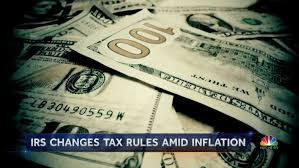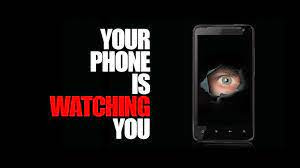October Newsletter 2022
Happy Halloween
We can thank the Celtics for this annual tradition. No, not the Boston Celtics, but the original Irish ones, dating back to 500BC.
Back then, New Year’s Day was on Nov. 1, which they called Samhain. The belief was that prior to the new year, the door between the worlds of the living and the dead swung open.
The trapped souls of the recently dead were then free to pass to the underworld. Since they thought spirits came out after dark, this supernatural activity reached its peak the night before, on Oct. 31.
Rituals were created for protection to fool the spirits. These included costumes and disguises. They lit bonfires and stuck candles inside carved turnips – the first jack-o’-lanterns – to scare away any spirits looking for mischief. If all else failed, they carried a pocketful of treats to pay off wayward spirits and send them back on their way to the underworld.
So, we can thank the Irish, who brought Halloween to our country in the 1800s. While the origins of Halloween had many religious undertones, the current version is most definitely an American one.
More locally, what is going on around Denver this weekend to celebrate this spooky holiday? Well, there is the Trick or Treat Trail at the Denver Zoo, for starters. How about Trick or Treat Street at McGregor Square?
We also found this nice list of events around the Front Range, including corn mazes and haunted houses to visit.
For the exact time and date of door-to-door trick or treating, you should consult with your local folks, as those vary quite a bit, even by neighborhood. The generally accepted window is from 3:30-7 or so on Monday the 31st, but some cities have their own rules on that one.
Meanwhile, we hope you have a fun and safe Halloween!!!!

Big Tax Changes
We are going through a rough time economically here in the U.S.
Experts vary in their opinion on whether or not we are in a full-blown recession, but it feels like it to us.
The good news is that the IRS has made some sweeping changes to ease the pain a bit going forward.
Due to inflation, the bracket thresholds will be going up about 7% in 2023, which should increase our take-home pay.
Also, the standard deductions and exemptions changed and will rise by $900 for single/separate filers, $1,800 for joint returns, and for heads of households, it will rise by $1,400.
This marks the largest adjustment to the standard deduction since core features of the tax system were first indexed to inflation in 1985.
The folks at SHRM did a great job recapping this and the full tables can be found here.
We welcome any financial relief during these strange post-COVID times, and we hope this helps all of us going forward.

How Safe is Denver?
For many years, we have always felt that Denver was a generally safe city.
Over the past few years, that feeling of safety has certainly diminished and the most recent statistics back those feelings up.
Of course, safety comes in many forms. Whether physical, financial, or safety from natural disasters, we all want to feel good about our situation.
Wallethub did a comprehensive study on safety and analyzed 182 cities across the U.S. for a complete look with the following methodology.
They ranked crime rates, concentrations of first responders, homelessness, traffic deaths, and drug overdose rates. Natural disaster risk accounted for the likelihood of floods, earthquakes, wildfires, hail, hurricanes, and tornados. Financial safety considered a city’s unemployment and foreclosure rates, household financial metrics such as job security and savings levels, and other economic indicators.
The bad news? Denver ranked 164 out of 182. We were sandwiched between Little Rock and New Orleans in terms of overall safety, which is also quite concerning given New Orleans’ reputation for crime.
The safest city in the U.S.? Columbia, Maryland. The least safe? St. Louis, Missouri.
A very interesting read and the full report courtesy of Wallethub can be found here.
We aren’t sure how to fix this situation, but we have the overwhelming feeling that our fine city can do better.

Is Your Phone Spying on You?
Last month we talked about your boss spying on you, this month we tackle your phone.
For years people have surmised that your phone hears what you are saying and then makes recommendations that are tied to what it hears.
While it’s complicated, the short answer is yes, it is.
In many cases, we enable this with voice assistants such as Siri, Alexa, and Google. With those enabled, we have certainly given permission for our information to be shared.
What about normal conversations?
Without getting too far into the weeds, we would recommend reading this piece we found which covers this in a comprehensive manner.
Finally, there are cases where malware infects your phone, and this goes well beyond marketing, which is the root of most of our concerns.
If your phone battery is draining quickly, overheating, or randomly rebooting, you may have a phone virus or malware that needs to be cleaned up.
The folks at Consumer Affairs did a good job of outlining what to watch for regarding malware and those 10 things to look for (in two parts) can be found here and here.
Norton also put out an article on why your phone is listening and how to stop it.
The bottom line? We should probably all be more vigilant about what we put out there around our phones, and what level of access they truly have to our lives.
The global marketing machine is indeed listening to us and learning more about us every day.

Is Exercise Killing You?
Every now and then we catch a headline that grabs us.
Common wisdom about exercise is that anything helps, but vigorous, frequent exercise is the key to longevity.
But is it really? Much like the food pyramid of the 70s, we are finding that many of our long-held beliefs about things were plain wrong.
Recent data indicates this may be the case with exercise.
Fortunately, we have the Mayo Clinic to fully examine this phenomenon and turn common wisdom on its head.
From the article on Medium: “While higher volumes of weekly sports training (cardio exercise, but also ball sports, weight-lifting, and anything that makes you sweaty or short of breath) initially led to a big drop in mortality risk, those benefits began to regress among people who trained hard for more than 4.5 hours per week.”
“Their mortality risks were still much lower than those of non-exercisers, but they didn’t fare quite as well as the people who took a more measured approach to physical activity.”
A similar study was done in 2015 and corroborates the “U-shaped” risk curve among runners and high-impact training.
The big takeaway?
If you’re aiming for optimal lifespan extension, the best heart and mortality outcomes are associated with roughly 150 minutes of weekly vigorous exercise, and no more than 60 minutes of weekly weight training.
Anything more can be dangerous and have lasting effects on our cardiovascular systems.
The nuts and bolts data can be found here, courtesy of the Mayo Clinic and Science Direct.
Leave it to us to finally prove that less exercise might be better for us!!!

Monthly Award Winners
Our monthly award winners for September were Maria Zapata, Mary Moreno, Maria Concepcion Reyes, Josefina Quinonez, and Juana Luna.
In the Team Leader ranks, it was Laura Varela and Rosa Chavez.
We are so proud of our winners, and of all the folks that are in and out of your homes each week.
We are also very appreciative to be a part of your lives and your homes. You provide the platform for our teams to perform, and for that we are grateful.
Please join me in congratulating our best performers for the month of September.

Queen Bee Corner
by Angela
How do you choose the right cleaner for your needs?
There are various categories of cleaning, Residential Cleaning, Commercial Cleaning, Disaster Cleaning, and Restoration.
Residential cleaning falls generally into two categories; an individual or a company.
Who to choose should be guided by the client’s personality. Do you want a company that will come in with 3 or 4 trained cleaners, who bring their own products and equipment and clean your house while you walk the dog or go shopping?
Or would you prefer to be in a hands-on supervisory position while an individual cleans your home? You choose and supply the equipment and products and train an individual in the way you like things done, and therefore want to be home during the cleaning.
When I speak with a prospective client, I outline the pros and cons of company vs individual and there have absolutely been times when we both leave the conversation agreeing that an individual would better fit the need.
Determining your personal style before hiring will greatly improve your chances of having a happy cleaning experience versus a frustrating one.
Bee
